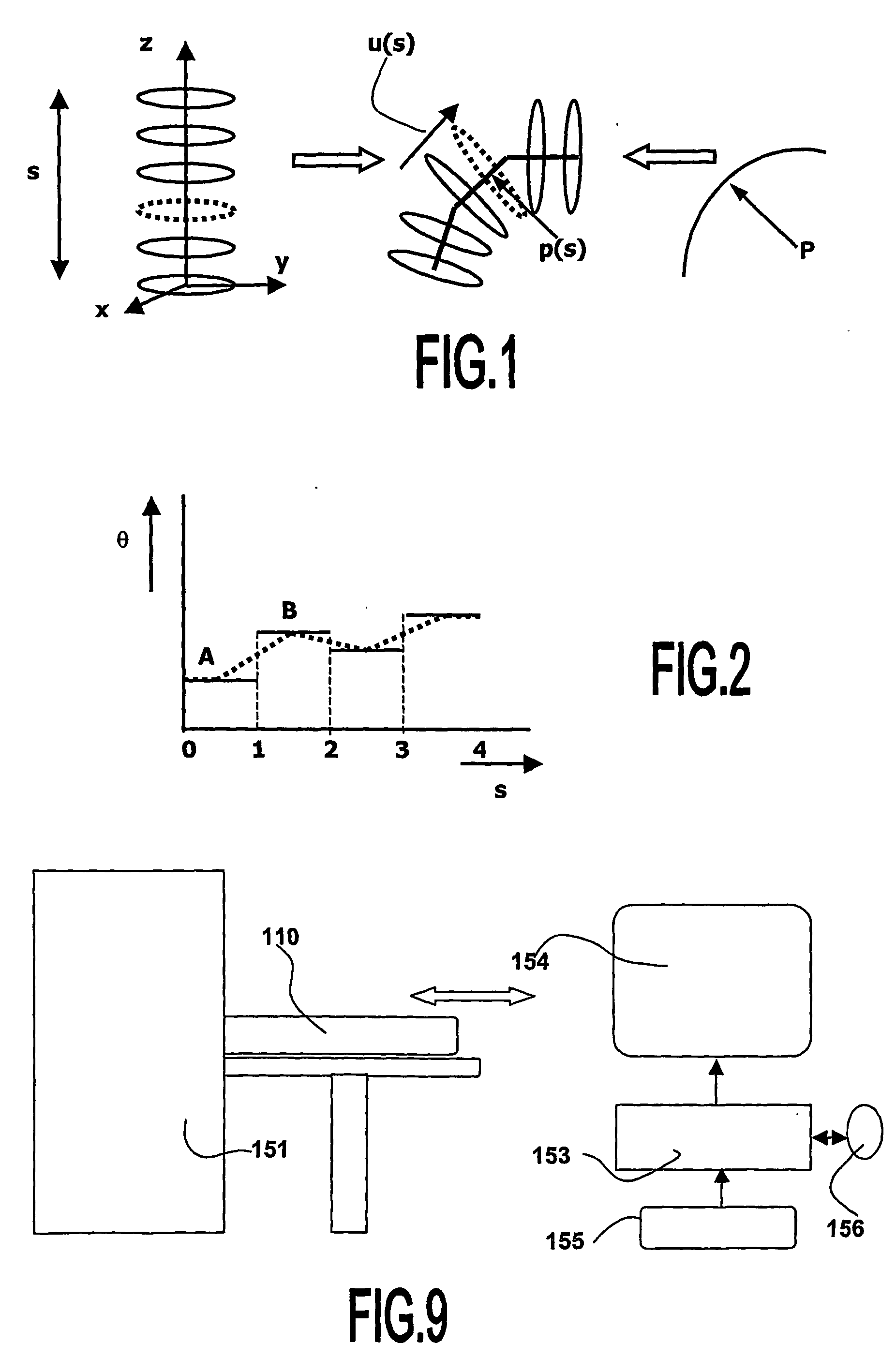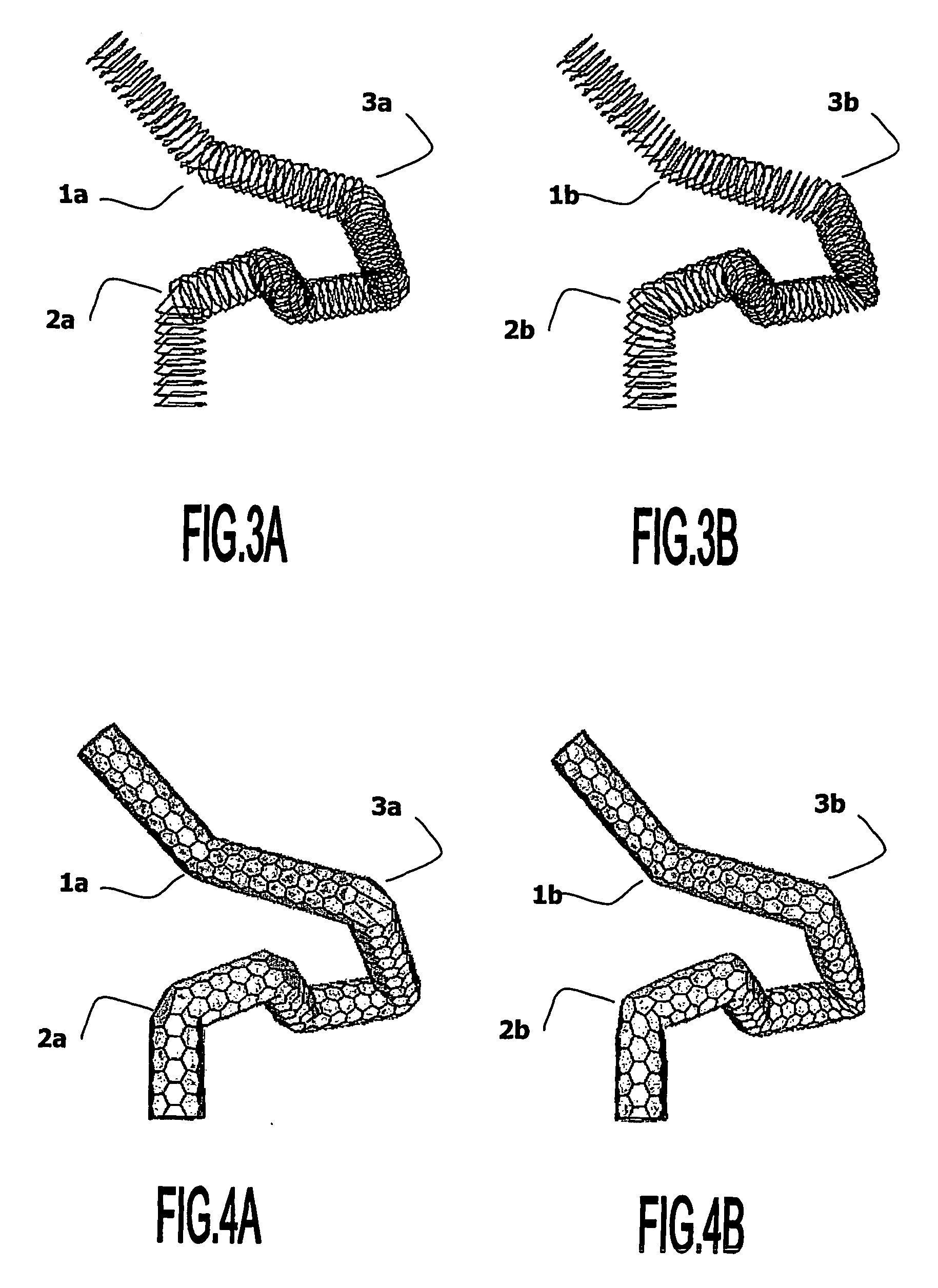Image processing method for automatic adaptation of 3-d deformable model onto a substantially tubular surface of a 3-d object
a deformation model and image processing technology, applied in image enhancement, image analysis, instruments, etc., can solve the problem of rapid change of direction between two consecutive segments of 3-d path, and achieve the effect of improving segmentation of complex organs, avoiding sharp radius changes, and improving visualization
- Summary
- Abstract
- Description
- Claims
- Application Information
AI Technical Summary
Benefits of technology
Problems solved by technology
Method used
Image
Examples
Embodiment Construction
[0026] The invention relates to an image processing method to be applied for example to a three-dimensional (3-D) digital image represented in gray levels. The image may represent the noisy three-dimensional surface of an organ called object of interest. In order to provide the user with a better view of the object of interest, for instance with respect to the background, this object is segmented. The segmented image permits the user of better studying or detecting abnormalities or diseases of the organ. In the present example, the object of interest is a tubular organ, for instance the colon or an artery or the bronchi. The way the three-dimensional image is acquired is not part of the invention. The segmentation method could be applied to three-dimensional digital images of organs that can be acquired by ultrasound systems or X-ray apparatus or by other systems known of those skilled in the art.
[0027] After the acquisition of the three-dimensional image representing the three-dim...
PUM
 Login to View More
Login to View More Abstract
Description
Claims
Application Information
 Login to View More
Login to View More - R&D
- Intellectual Property
- Life Sciences
- Materials
- Tech Scout
- Unparalleled Data Quality
- Higher Quality Content
- 60% Fewer Hallucinations
Browse by: Latest US Patents, China's latest patents, Technical Efficacy Thesaurus, Application Domain, Technology Topic, Popular Technical Reports.
© 2025 PatSnap. All rights reserved.Legal|Privacy policy|Modern Slavery Act Transparency Statement|Sitemap|About US| Contact US: help@patsnap.com



